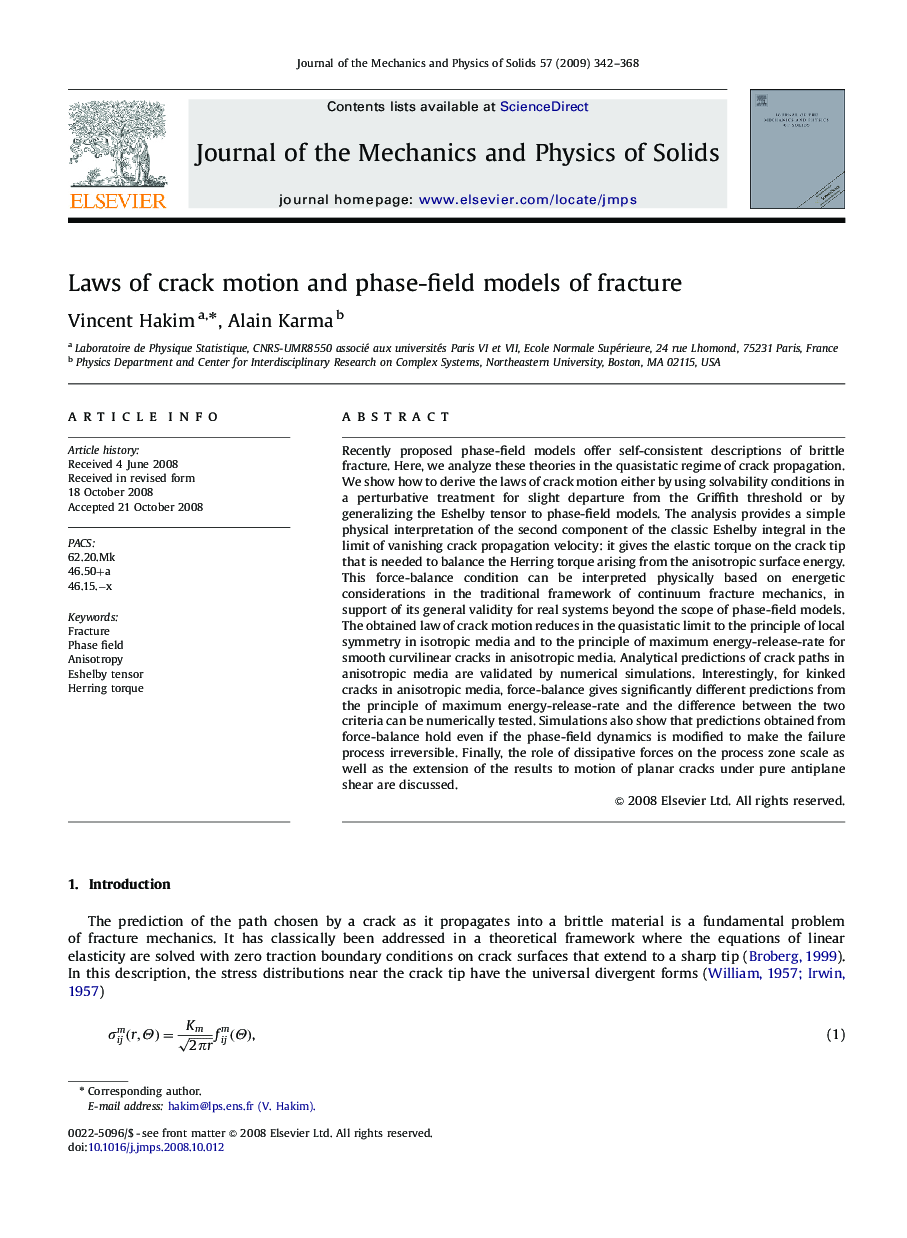| Article ID | Journal | Published Year | Pages | File Type |
|---|---|---|---|---|
| 799925 | Journal of the Mechanics and Physics of Solids | 2009 | 27 Pages |
Recently proposed phase-field models offer self-consistent descriptions of brittle fracture. Here, we analyze these theories in the quasistatic regime of crack propagation. We show how to derive the laws of crack motion either by using solvability conditions in a perturbative treatment for slight departure from the Griffith threshold or by generalizing the Eshelby tensor to phase-field models. The analysis provides a simple physical interpretation of the second component of the classic Eshelby integral in the limit of vanishing crack propagation velocity: it gives the elastic torque on the crack tip that is needed to balance the Herring torque arising from the anisotropic surface energy. This force-balance condition can be interpreted physically based on energetic considerations in the traditional framework of continuum fracture mechanics, in support of its general validity for real systems beyond the scope of phase-field models. The obtained law of crack motion reduces in the quasistatic limit to the principle of local symmetry in isotropic media and to the principle of maximum energy-release-rate for smooth curvilinear cracks in anisotropic media. Analytical predictions of crack paths in anisotropic media are validated by numerical simulations. Interestingly, for kinked cracks in anisotropic media, force-balance gives significantly different predictions from the principle of maximum energy-release-rate and the difference between the two criteria can be numerically tested. Simulations also show that predictions obtained from force-balance hold even if the phase-field dynamics is modified to make the failure process irreversible. Finally, the role of dissipative forces on the process zone scale as well as the extension of the results to motion of planar cracks under pure antiplane shear are discussed.
